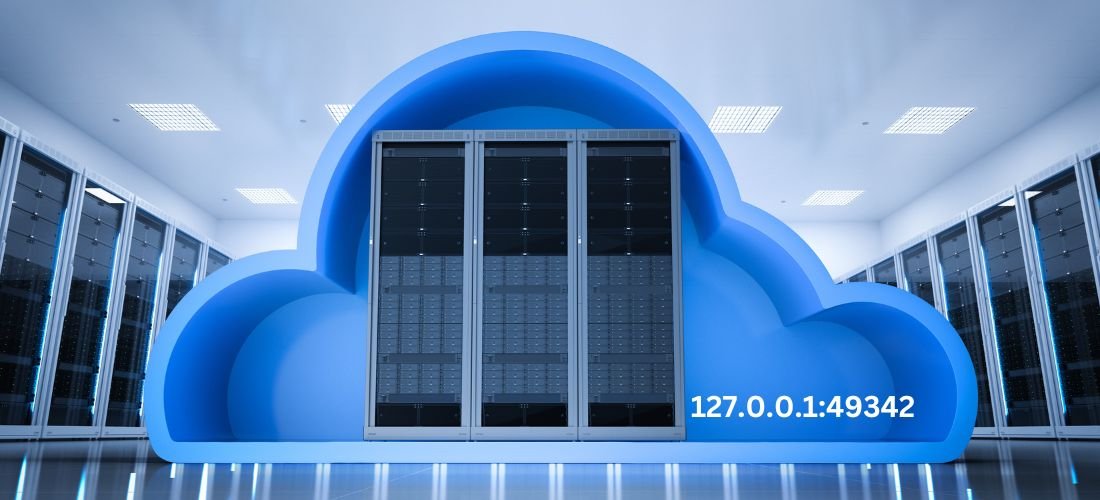Connecting to your localhost can seem like a daunting task, especially for those new to networking. However, understanding the basics opens up a world of possibilities. Whether you’re developing software, testing applications, or simply exploring networking concepts, getting familiar with IP addresses is essential.
In this guide, we will dive deep into the intriguing universe of 127.0.0.1:49342 and uncover what it means for your local development environment. From distinguishing between public and private IPs to troubleshooting common issues you may encounter along the way, we’ll provide you with all the knowledge needed to navigate these waters confidently.
Ready to enhance your tech skills? Let’s get started!
Understanding IP Addresses
IP addresses serve as unique identifiers for devices connected to a network. Think of them as phone numbers that help different devices communicate with one another. There are two main versions: IPv4 and IPv6, each designed to accommodate the growing number of internet users.
IPv4 consists of four sets of numbers separated by periods, like 192.168.1.1. It allows about 4 billion unique addresses but is becoming scarce due to increasing demand. This led to the development of IPv6, which uses hexadecimal notation and can support an almost limitless number of devices.
Understanding these fundamentals helps you troubleshoot connectivity issues or configure your local environment more effectively.
Read Also: Cute:mnkymce3zh8= Drawing | Boston Celtics vs Pacers Game 4
Exploring 127.0.0.1:49342
When you access 127.0.0.1:49342, you’re connecting to a specific service running on your local machine. This address is known as the loopback address or localhost, which allows you to communicate with applications without needing an external network.
Port 49342 represents a unique endpoint for this connection, often linked to particular software processes on your system. Each port has its own role and can handle multiple requests simultaneously.
Using this setup is essential for developers testing web applications or services locally before deployment. It provides a safe environment where changes can be made without affecting live operations or users in real time.
The Role of Port 49342
Port 49342 plays a crucial role in network communication, especially when connecting to localhost. Each port number acts as a unique identifier for specific services running on your computer. When you use the IP address 127.0.0.1:49342, you’re directing traffic to that particular service.
This port can be utilized by various applications and servers during development or testing phases. For instance, developers may run local web servers that listen on this port to test their projects before deployment.
Keeping track of which applications use specific ports is essential for effective troubleshooting and management of system resources. Understanding this helps maintain smooth connectivity within your local environment.
Types Of IP Address
IP addresses come in various types, each serving distinct purposes. The most common are IPv4 and IPv6. IPv4 uses a 32-bit format, allowing for around 4 billion unique addresses. It is still widely used today despite the exhaustion of available addresses.
IPv6 was introduced to address this limitation, utilizing a 128-bit format that enables an almost infinite number of unique IPs. This allows for better scalability as the internet continues to grow.
Static and dynamic IP addresses are two additional classifications. Static IPs remain constant over time, useful for servers requiring consistent access. Dynamic IPs change periodically and are typically assigned by DHCP servers, optimizing resource management on networks.
Differentiating Public and Private IP Addresses
Public IP addresses are assigned to devices that connect directly to the internet. They are unique across the entire web, allowing communication between different networks. These addresses can be seen by anyone on the internet and are essential for accessing websites or online services.
In contrast, private IP addresses are used within local networks. Devices like computers, printers, and smartphones utilize these private addresses for internal communication without being visible on the broader internet.
Private IPs help improve security by isolating local traffic from external access. Common ranges for private IPs include 192.168.x.x and 10.x.x.x, ensuring a structured networking environment while conserving public address space.
Implementing 127.0.0.1:49342 Localhost Operations
Implementing localhost operations is essential for developers. It allows you to run applications on your own machine without needing an external server. Using the IP address 127.0.0.1, you can access various services hosted locally.
To start, ensure that your web server software, such as Apache or Nginx, is installed and running properly on port 49342 or any desired port. Once set up, navigate to http://127.0.0.1:49342 in your browser.
This approach enables quick testing and debugging of websites and applications before deployment. You gain complete control over configurations and resources while avoiding network latency issues typical in online servers.
Security Concerns and Considerations
When accessing 127.0.0.1:49342, security should be a top priority. Localhost connections may feel isolated, but they can still be vulnerable to threats if not properly managed. Always ensure that your firewall is active and configured correctly.
Another essential aspect is monitoring the applications running on this port. If you’re using third-party software, verify its credibility and keep it updated to mitigate risks from exploitation or malware attacks.
Consider implementing encryption for sensitive data transfers even within localhost environments. This adds an extra layer of protection against unauthorized access or eavesdropping attempts by malicious actors in your network.
127.0.0.1:49342 Troubleshooting Guide
If you’re having trouble connecting to 127.0.0.1:49342, start by checking your network settings. Ensure your firewall isn’t blocking the connection, as this is a common issue that prevents access.
Next, verify whether your application is running correctly on the specified port. Sometimes, services crash or fail to bind properly, leading to connectivity issues.
Testing with different browsers can help identify if it’s a browser-specific problem. You might also want to clear cache and cookies for good measure. Each of these steps can bring you closer to resolving any hiccups preventing localhost access.
Common Uses of 127.0.0.1:49342
This address is commonly used for:
Local Web Development
- Test and run web applications locally without affecting the production environment
- Make changes to code and see the results immediately
- Use tools like live reload to automatically refresh the browser as changes are made
- Test web applications on different devices and browsers without deploying to a public server
Debugging
- Identify and fix issues in applications or services
- Use debugging tools like print statements, console logs, or debuggers to identify problems
- Test and iterate on fixes without affecting the production environment
- Collaborate with team members to debug issues in a shared local environment
Testing
- Try out new services or applications without impacting the live environment
- Test user interfaces, APIs, or other components without affecting real users
- Use automated testing tools to run tests and ensure code quality
- Test for compatibility with different browsers, devices, or operating systems
Development Environment
- Run a local development environment, such as a local server or database
- Use tools like Docker or virtual machines to create a consistent development environment
- Test and develop database-driven applications without affecting the production database
- Use version control systems like Git to manage code changes and collaborate with team members
Security Testing
- Test security measures and identify vulnerabilities in a controlled environment
- Use tools like vulnerability scanners or penetration testing frameworks to identify weaknesses
- Test for common web vulnerabilities like SQL injection or cross-site scripting (XSS)
- Collaborate with security teams to identify and fix security issues before deployment.
Read Also: Offers Thunderonthegulf.com | Sacramento Kings vs New Orleans Pelicans Stats
Final Thoughts
Connecting to your localhost is an essential skill for developers and tech enthusiasts. Understanding how to navigate through IP addresses, especially 127.0.0.1:49342, can enhance your ability to test applications effectively.
As you explore the nuances of public and private IP addresses, you’ll gain insight into network configurations that can impact your development projects. This knowledge empowers you to create more secure and efficient local environments.
FAQs:
Q: What is 127.0.0.1:49342?
A: It’s a local IP address and port number that refers to a service or application running on your own machine.
Q: What is the purpose of using 127.0.0.1:49342?
A: It’s used for local web development, debugging, testing, development environments, and security testing.
Q: Can I access 127.0.0.1:49342 from another computer?
A: No, it’s only accessible from the local machine itself.
Q: Is 127.0.0.1:49342 secure?
A: Yes, since it’s only accessible locally, it’s a secure way to test and develop applications without exposing them to the public internet.
Q: Can I change the port number 49342?
A: Yes, you can use any available port number, but 49342 is a commonly used port for local development.
Q: How do I access 127.0.0.1:49342?
A: You can access it by typing http://127.0.0.1:49342 in your web browser or using a tool like curl from the command line.
Q: What happens if I don’t specify a port number?
A: If you don’t specify a port number, the default port 80 (for HTTP) or 443 (for HTTPS) will be used.




